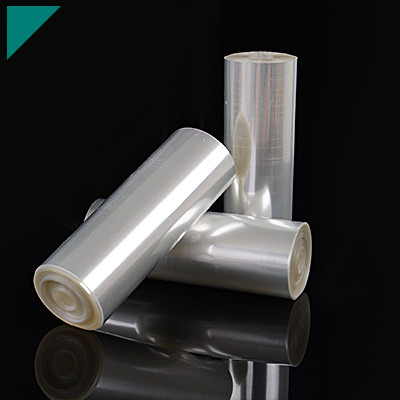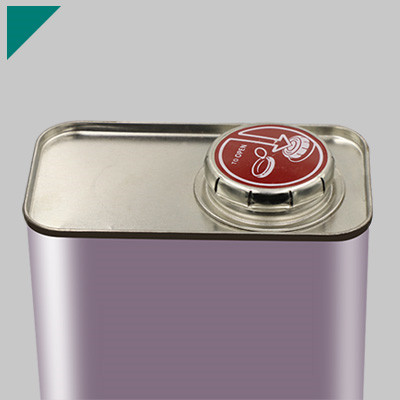- Home
- >
- Application
- >
- Smart Speaker Adhesive
Smart Speaker Adhesive

Smart Speaker Adhesive, an often overlooked marvel in the realm of technological innovation, stands as the silent architect behind the seamless symphony of sound in our daily lives. This comprehensive exploration seeks to unveil the enigmatic world of Smart Speaker Adhesive, an ingenious technology reshaping how we perceive and engage with audio devices. From its inception to its pivotal role in enhancing our beloved smart speakers, this journey delves into the depths of this adhesive wonder, uncovering its mysteries and showcasing its key advantages. Prepare to embark on a revelatory expedition that dissects the core of Smart Speaker Adhesive, illuminating its significance in every chord and melody that fills our spaces with unparalleled clarity and richness.
Table of Contents
ToggleWhat is Smart Speaker Adhesive and How Does It Work?
In the realm of smart technology, integrating smart speakers into our daily lives has been nothing short of transformative. However, the advent of smart speaker adhesive takes this innovation to a new level, enhancing convenience and functionality in unimaginable ways. Let’s delve into what smart speaker adhesive is and how it operates to revolutionize our interactions with these devices.
What is Smart Speaker Adhesive?
- Innovative Bonding Solution:Smart speaker adhesive is a specialized adhesive material designed to securely attach smart speakers onto various surfaces without causing damage.
- Versatile Application:It is engineered to adhere to different surfaces such as walls, glass, wood, or tiles, offering flexibility in placement.
How Does It Work?
- Adhesive Composition:Smart speaker adhesive comprises a unique blend of materials, often utilizing nano-suction or reusable adhesive technology.
- Nano-Suction Technology:Utilizes microscopic suction cups to create a strong bond between the smart speaker and the surface it’s placed on. It doesn’t leave residue and can be reused multiple times.
- Reusable Adhesive:Another variant employs a reusable adhesive that maintains a firm grip while allowing easy removal and repositioning without leaving marks or damaging the surface.
Advantages of Smart Speaker Adhesive
- Seamless Integration: Enables easy integration of smart speakers into any room without needing permanent fixtures or wall mounts.
- Flexibility in Placement:Offers the freedom to reposition the smart speaker at any desired location, enhancing convenience and adaptability.
- Damage-Free Attachment:Prevents surface damage, allowing users to experiment with placements without fearing leaving marks or residues behind.
- Reuse and Longevity:Many smart speaker adhesives are reusable, retaining their adhesive properties even after multiple uses, making them cost-effective and sustainable.
Understanding Smart Speaker Adhesives: What Are the Different Types and Varieties?
Smart speakers have seamlessly integrated into our lives, revolutionizing our interactions with technology. Behind their sleek designs and impressive functionalities lies a crucial component often overlooked: smart speaker adhesives. These adhesives are pivotal in ensuring stability, durability, and performance. Understanding the diverse types and varieties can enhance your understanding of these tech marvels.
Here’s a breakdown of the various smart speaker adhesives:
Acrylic Adhesives
- Known for their versatility and strong bonding capabilities.
- Ideal for bonding dissimilar materials like plastic, metal, and glass in smart speaker construction.
- It provides excellent resistance to heat and chemicals, ensuring durability.
Silicone Adhesives
- It offers flexibility, making it suitable for components prone to movement or vibrations.
- It exhibits high-temperature resistance, crucial for devices with varying heat levels.
- Water-resistant properties make it valuable in smart speakers exposed to moisture.
Polyurethane Adhesives
- Known for their robust bonding strength and ability to withstand harsh conditions.
- It provides exceptional resistance to impact and shock, safeguarding smart speakers from accidental damage.
- Often used in rugged speaker designs for enhanced durability.
Double-Sided Adhesive Tapes
- It offers easy application and flexibility during assembly, making it highly convenient.
- Allows for temporary positioning before permanent fixation, aiding in precise assembly.
- It enables a clean and neat finish without visible bonding lines, enhancing the overall aesthetics of the final product.
UV-Curable Adhesives
- The rapid bonding it provides upon exposure to ultraviolet light makes it ideal for automated assembly processes.
- It offers excellent transparency, maintaining the aesthetic appeal of smart speaker designs.
- It ensures quick production turnaround due to its fast-curing properties, expediting the manufacturing process.
Understanding the nuances of these adhesive types empowers manufacturers to select the most suitable adhesive for specific smart speaker components. Factors like material compatibility, environmental conditions, and manufacturing processes heavily influence the choice of adhesive.
What Factors Should You Consider Before Choosing Smart Speaker Adhesive?
Smart speakers have become integral in modern homes, offering convenience and connectivity. However, behind their seamless integration into our spaces lies a crucial element: the smart speaker adhesive. This seemingly small component holds the device in place, ensuring stability and functionality. Here are the factors to consider before selecting the ideal smart speaker adhesive:
Compatibility
- Ensure the adhesive is compatible with wood, glass, metal, or tile surfaces.
- Consider the weight-bearing capacity of the adhesive to support different smart speaker models.
Adhesive Type
- Evaluate adhesive types like double-sided tapes, adhesion pads, or gel adhesives.
- Double-sided tapes offer strong adhesion but may leave residue, while gel adhesives provide reusability but might need more sturdy.
Removability and Residue
- Opt for adhesives that offer clean removal without damaging surfaces or leaving sticky residue behind.
- Some adhesives leave marks or require additional cleaning, which might affect the aesthetics of your space.
Temperature and Environment Resistance
- Assess the adhesive’s ability to withstand varying temperatures and environmental conditions.
- For instance, in humid areas or outdoor placements, adhesives with high resistance to moisture and temperature fluctuations are essential.
Installation Ease
- Consider ease of application and repositioning during installation.
- Adhesives with user-friendly application processes can simplify the setup, reducing the chances of errors.
Durability and Longevity
- Evaluate the longevity of the adhesive to ensure the smart speaker remains securely attached over time.
- Factors like UV resistance and material quality contribute to the adhesive’s durability.
User Reviews and Recommendations
- Research and read user reviews or seek recommendations from experts.
- Real-life experiences and insights can provide valuable information about the performance and reliability of specific adhesive brands.
Aesthetic Impact
- Consider the visual impact of the adhesive on the overall aesthetics of the space.
- Some adhesives come in various colors or transparent options to blend seamlessly with the surroundings.
How Do You Install Smart Speaker Adhesive Step-by-Step?
In the rapidly evolving world of smart home technology, smart speakers have become ubiquitous, offering convenience and connectivity. Many opt for using smart speaker adhesives to enhance the user experience and minimize clutter. These adhesives provide a seamless and space-saving solution, allowing users to mount their speakers on various surfaces. Here’s a comprehensive step-by-step guide on how to install smart speaker adhesive effortlessly.
Step 1: Gather Your Materials
- Before you begin, ensure you have all the necessary materials at hand. The typical package includes several items: a smart speaker adhesive, a cleaning solution, a microfiber cloth, and a level to ensure proper alignment.
Step 2: Choose the Right Surface
- Smart speaker adhesives work best on smooth surfaces like glass, tile, or painted walls. Ensure the chosen surface is clean, dry, and free of dust or debris hindering the adhesive’s effectiveness.
Step 3: Clean the Surface
- Use a mild cleaning solution to wipe down the chosen surface. This step is crucial for maximizing the adhesive’s grip. After cleaning, allow the surface to dry completely.
Step 4: Position the Smart Speaker
- Determine the ideal location for your smart speaker. Consider factors such as optimal audio projection and aesthetics. Once decided, mark the desired position with a pencil or tape.
Step 5: Peel off the Adhesive Backing
- Carefully peel off the backing from the smart speaker adhesive. Avoid touching the adhesive surface with your fingers, as oils and dirt can reduce its effectiveness.
Step 6: Align and Press Firmly
- Align the adhesive with the marked position on the surface. Use a level to ensure the smart speaker will be mounted perfectly straight. Once aligned, press the adhesive firmly against the surface to establish a strong bond.
Step 7: Allow Adequate Drying Time
- Most smart speaker adhesives require time to cure and reach maximum holding capacity. Follow the manufacturer’s recommendations for drying time, typically around 24 hours.
Step 8: Mount the Smart Speaker
- Once the adhesive has fully cured, carefully mount your smart speaker onto the secured adhesive. Apply gentle pressure to ensure a secure attachment.
Step 9: Enjoy Your Smart Speaker
- Now that your smart speaker is securely in place sit back and enjoy the enhanced audio experience without sacrificing valuable space.
Is Smart Speaker Adhesive Harmful to Surfaces?
Smart speakers have revolutionized our interactions with technology, offering convenience and seamless integration into our daily lives. However, concerns have arisen regarding the adhesive used to mount these devices, prompting questions about their potential harm to surfaces.
Exploring Smart Speaker Adhesive
- Adhesive Composition: Smart speakers often use adhesive pads or tapes to secure them to surfaces.
- Adhesive Types: These adhesives vary in composition, ranging from double-sided tapes to specialized adhesives for different surfaces.
- Adhesion Strength: Manufacturers aim for a strong bond without causing damage upon removal.
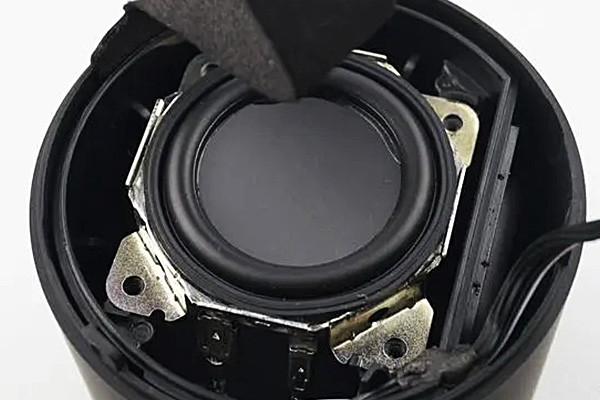
Potential Impact on Surfaces
- Residue: Some adhesives may leave residue or marks upon removal, especially on delicate surfaces like wood or painted walls.
- Surface Damage: Prolonged adhesion or incorrect removal techniques could harm surfaces, causing paint peeling or material damage.
- Temperature Sensitivity:Extreme temperatures might affect adhesive performance, causing it to lose effectiveness or damage the surface during removal.
Mitigating Risks and Best Practices
- Surface Assessment: Before adhesion, assess the surface type and condition to choose the appropriate adhesive and prevent damage.
- Adhesive Removal Techniques:Use recommended removal methods provided by the manufacturer to minimize the risk of surface damage.
- Alternative Mounting Solutions: Explore alternative mounting options such as stands, brackets, or removable hooks that don’t rely on adhesive.
Environmental Impact and Sustainability
- Adhesive Disposal: Proper adhesive disposal methods are crucial to minimize environmental impact. Biodegradable or eco-friendly adhesives are being developed to address sustainability concerns.
- Reusable Adhesives: Some companies are exploring reusable adhesives that maintain their stickiness even after multiple uses, reducing waste and environmental footprint.
Can Smart Speaker Adhesive Handle Outdoor Conditions?
The integration of smart speakers into outdoor spaces has surged in popularity, facilitating seamless control of music, lighting, and more. However, the reliability of adhesives securing these devices outside warrants scrutiny. Here’s a breakdown:
The Challenge
- Weather Exposure:Outdoor settings subject smart speakers to diverse weather conditions, from scorching sun to rain and frost.
- Adhesive Resilience:Standard adhesives might deteriorate under extreme temperatures, humidity, or prolonged exposure to UV rays.
- Surface Variability:Outdoor surfaces often differ from indoor ones, ranging from rough concrete to textured wood or metal, impacting adhesive efficacy.
Assessing Smart Speaker Adhesives
- Weatherproof Formulations:Specialized adhesives for outdoor use boast weather-resistant properties, enduring temperature fluctuations, and moisture exposure.
- UV Resistance:Adhesives with UV stabilizers withstand prolonged sun exposure, preventing degradation and ensuring long-term adherence.
- Surface Compatibility:Certain adhesives cater to various surfaces, offering strong bonding capabilities irrespective of texture or material.
Solutions and Recommendations
- Specialized Outdoor Adhesives:Manufacturers increasingly offer adhesives explicitly formulated for outdoor use, prioritizing weather resilience and durability.
- Adhesive Pads and Mounts:Utilizing adhesive pads or mounts designed for outdoor applications provides a secure and removable solution, minimizing surface damage.
- Regular Maintenance:Periodic checks and maintenance of adhesion ensure the speaker remains securely affixed and functioning optimally.
What Are the Best Practices for Removing Smart Speaker Adhesive?
Smart speakers have revolutionized how we interact with technology, but when it comes time to reposition or remove them, the adhesive can pose a challenge. Here are some best practices for effectively removing smart speaker adhesive without damaging your surfaces or the device itself:
Preparation
- Assess the Surface:Check the surface where the smart speaker is attached. Different surfaces (wood, metal, painted walls) may require other removal techniques.
- Gather Materials:Prepare rubbing alcohol, a heat source (hair dryer or heat gun), a plastic scraper or credit card, and a microfiber cloth.
Step-by-Step Process
- Heat Application:Gently heat the adhesive with a hairdryer or heat gun set to low. Heat helps loosen the adhesive’s bond without damaging the surface.
- Peeling Off:Once the adhesive is warm, use a plastic scraper or a credit card to lift the adhesive’s edges. Proceed slowly to avoid surface damage.
- Adhesive Residue:If residue remains, dampen a microfiber cloth with rubbing alcohol and gently rub the affected area. Test the alcohol on a small, inconspicuous spot first to ensure it doesn’t damage the surface.
- Repeat if Necessary:Stubborn adhesive might require multiple applications of heat and rubbing alcohol. Be patient and persistent while avoiding excessive force.
- Cleaning:Once the adhesive is removed, clean the surface with a mild detergent and water to remove any remaining residue or alcohol.
Tips to Remember
- Avoid Excessive Force:Forceful removal may damage the surface of the smart speaker. Patience and gentle handling are key.
- Test in a Hidden Area:Before applying any adhesive removal method, test it on a small, inconspicuous area to ensure it doesn’t cause damage.
- Use Suitable Tools:Plastic scrapers or credit cards are preferable over metal tools to prevent scratches.
- Proper Disposal:Dispose of the removed adhesive properly to avoid accidentally sticking it to other surfaces.
Additional Considerations
- Manufacturer Guidelines: Check the smart speaker’s manual or manufacturer’s website for specific removal instructions or recommended products.
- Alternative Adhesive Solutions:Some manufacturers provide replacement adhesive pads or suggest specific adhesives suitable for reattachment.
Tips for Customizing Adhesion: Ensuring Optimal Smart Speaker Placement?
Smart speakers have become ubiquitous in modern households, offering convenience and functionality in one compact device. However, achieving the best performance from these gadgets relies heavily on their placement. Mastering the art of adhesion is key to ensuring your smart speaker stays put and delivers optimal sound quality. Here are some tips for customizing adhesion to guarantee the ideal placement of your smart speaker:
Surface Evaluation
- Assess the surface where the smart speaker will be placed. Ensure it’s clean, dry, and free of dust or residue.
- Different surfaces require different adhesives. For wood, metal, glass, or plastic surfaces, select adhesives explicitly designed for those materials.
Adhesive Selection
- Opt for smart speaker adhesive pads or tapes that offer a strong hold without damaging surfaces upon removal.
- Look for adhesive options with adjustable or repositionable features, allowing you to experiment with placement before committing.
Positioning Precision
- Prioritize the ideal location for your smart speaker. It should be centrally positioned, away from obstructions that might obstruct sound.
- Remember the speaker’s distance from walls or corners to prevent sound distortion and maximize audio quality.
Weight Consideration
- Check the weight capacity of the chosen adhesive. Ensure it can adequately support the weight of your specific smart speaker model.
- Consider multiple adhesion points for added stability and security if using a heavier speaker.
Temperature and Environment
- Verify the adhesive’s temperature resistance to remain effective in varying conditions.
- Consider environmental factors like humidity levels, especially in bathrooms or kitchens, to select adhesives that withstand moisture.
Trial Placement
- Before finalizing the adhesion, experiment with temporary placement using adhesive strips or putty to determine the optimal speaker position.
- Test the speaker’s audio output at different locations to find the spot that provides the best sound quality.
Application Technique
- Follow the manufacturer’s instructions meticulously when applying the adhesive. The proper application ensures maximum effectiveness.
- Apply even pressure on the adhesive for a secure bond and allow sufficient time for the adhesive to set before using the smart speaker.
How Do Various Brands of Smart Speaker Adhesives Compare?
In the ever-evolving world of smart technology, smart speakers have become integral to many households. As these devices find their way into various corners of our homes, the need for reliable and efficient mounting solutions arises. Enter the world of Smart Speaker Adhesives, a range of products designed to attach your smart speaker to different surfaces securely. Let’s delve into how various brands in this niche compare:
Ease of Application
- Some adhesives boast a straightforward peel-and-stick application, ensuring a hassle-free setup process.
- Others may require additional steps, such as mixing or priming, potentially making installation more complex.
Adhesive Strength
- The primary function of these adhesives is to hold the smart speaker in place securely. Evaluate the adhesive strength to ensure it can withstand the weight and vibrations of your specific smart speaker model.
- Look for adhesives that provide a strong bond without causing damage to the speaker or the mounting surface.
Compatibility
- Different smart speakers come in various shapes and sizes. Check the compatibility of the adhesive with your specific speaker model to guarantee a snug fit.
- Some adhesives are universal, fitting many smart speaker brands and models, while others are tailor-made for specific devices.
Versatility
- Consider whether the adhesive allows for versatile mounting options, such as wall mounting, ceiling mounting, or even mounting on unconventional surfaces.
- Some adhesives may be limited in placement options, so choose one that aligns with your preferred setup.
Durability
- Assess the durability of the adhesive, especially if you plan on repositioning the smart speaker in the future. Look for adhesives that maintain their strength even after multiple applications.
- Weather resistance is also crucial for outdoor installations to ensure the adhesive withstands various environmental conditions.
Residue-Free Removal
- A vital feature of a quality smart speaker adhesive is its removal ability without leaving behind residue or damaging the speaker or the mounting surface.
- Opt for adhesives that offer a clean removal process, allowing you to change the speaker’s location without any unwanted consequences.
Aesthetic Considerations
- Some smart speaker adhesives are designed to blend seamlessly with the speaker or the mounting surface, ensuring a visually appealing setup.
- Consider the color and design options to find an adhesive that complements your smart speaker and its surroundings.
What’s the Longevity and Durability of Smart Speaker Adhesives?
Smart speakers have revolutionized how we interact with technology, seamlessly integrating into our lives. Behind their effortless placement on various surfaces lies an unsung hero: the smart speaker adhesive. These adhesives, often overlooked, play a crucial role in the stability and longevity of these devices.
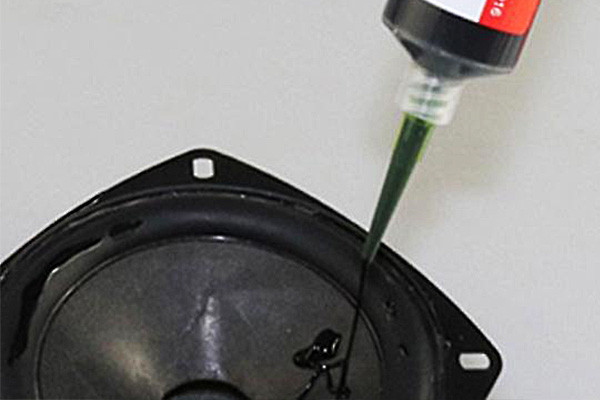
Understanding Smart Speaker Adhesives
- Composition:Smart speaker adhesives are typically made from silicone or specialized adhesives for solid bonding.
- Purpose:They ensure firm attachment of the speaker to surfaces, preventing accidental falls or displacement.
Longevity Factors
- Material Quality:High-quality adhesives prolong the lifespan of smart speakers, offering resilience against environmental factors like temperature changes and humidity.
- Adhesive Strength:The adhesive’s bonding strength directly impacts longevity. Stronger adhesives resist wear and tear over time.
Durability Evaluation
- Adhesive Testing:Manufacturers subject these adhesives to rigorous testing to assess durability under various conditions.
- Life Expectancy:Smart speaker adhesives can retain their efficacy for several years, depending on quality.
Factors Affecting Longevity
- Surface Type:Adhesive performance varies based on the surface it’s applied to, with smoother surfaces offering better adhesion.
- Usage Environment:Extreme temperatures or humidity might impact adhesive quality, potentially reducing longevity.
Tips for Enhancing Longevity
- Surface Preparation:Cleaning and drying the surface before application ensures better adhesion.
- Adhesive Replacement: Periodically replacing adhesives, especially after prolonged use, can maintain speaker stability.
Impact on User Experience
- Stability:A well-adhered smart speaker ensures stability, preventing accidental falls that can damage the device.
- Convenience:Long-lasting adhesives reduce the need for frequent readjustment or reinstallation.
Impact on Stability: How Does Adhesive Affect Sound Quality?
In the world of smart speakers, where technology seamlessly blends with audio excellence, one often overlooked component is the adhesive used in their construction. While it may seem trivial, the choice of adhesive can profoundly impact the stability and, more surprisingly, the sound quality of these devices.
Stability Matters
- Structural Integrity:Smart speakers come in various shapes and sizes, and the adhesive plays a crucial role in ensuring the structural integrity of the device. It prevents components from loosening or detaching, providing a stable and durable product.
- Longevity:The suitable adhesive enhances the lifespan of smart speakers. It resists environmental factors, such as temperature variations and humidity, which can compromise structural stability over time.
- User Experience:A stable smart speaker is likelier to deliver a consistent and reliable user experience. Users want a device that doesn’t wobble, vibrate, or exhibit any signs of instability during operation.
The Surprising Impact on Sound Quality
- Vibration Dampening:Adhesives play a role in minimizing vibrations within the speaker’s components. Excessive vibrations can lead to distortion in sound quality. High-quality adhesive dampens these vibrations, allowing for more precise and accurate audio reproduction.
- Material Compatibility:Different smart speaker materials require specific adhesives for optimal performance. The wrong adhesive can interfere with the resonance of the materials, resulting in a negative impact on sound quality. Manufacturers carefully select adhesives to ensure compatibility with the speaker’s construction materials.
- Precision in Assembly: The application of adhesive demands precision during the manufacturing process. A well-executed adhesive application ensures that components are securely bonded, minimizing any air gaps or irregularities that could compromise sound quality.
Choosing the Right Adhesive
- Acoustic Properties:Manufacturers consider the acoustic properties of adhesives when selecting them for smart speaker assembly. The adhesive should enhance, rather than detract from, the speaker’s ability to produce high-fidelity sound.
- Durability and Environmental Resistance:Adhesives must withstand the rigors of everyday use and resist environmental factors that could degrade their effectiveness over time. This durability is essential for maintaining stability and sound quality throughout the smart speaker’s lifespan.
Are There DIY Adhesive Solutions for Smart Speakers?
Smart speakers often come with mounting accessories or adhesive pads, but what if you want a more customized or removable solution? Here’s where the world of DIY adhesive solutions steps in:
Exploring Options
- Command Strips and Hooks:These versatile strips offer a firm hold and easy removal without damaging surfaces, making them an ideal choice for mounting smart speakers on walls or furniture.
- Double-Sided Tape:A classic choice for DIY enthusiasts, double-sided tapes provide a simple yet effective solution for temporary installations. Ensure it’s strong enough to support the weight of your smart speaker.
- Velcro Strips:Velcro strips provide flexibility and reusability, allowing for easy detachment and reattachment of smart speakers. This feature enables you to adjust their placement whenever necessary.
- Adhesive Putty or Gel:For lighter smart speakers, adhesive putty or gel can be viable. They provide a firm grip while being easy to remove without leaving residue.
Considerations Before Application
- Surface Compatibility:Ensure the adhesive used is suitable for the surface where you plan to mount the smart speaker, for instance, wood, metal, glass, or plaster.
- Weight Capacity:Verify that the chosen adhesive can support the weight of the smart speaker to prevent accidental falls or damage.
- Removability:If you prefer a solution that allows for repositioning or removal without residue, prioritize adhesives designed for such purposes.
DIY Application Steps
- Clean the Surface:Wipe the mounting area thoroughly to remove dust, grease, or dirt that might affect the adhesion.
- Prepare the Adhesive:Follow the instructions provided with the chosen adhesive, whether activating the adhesive surface or cutting it to size.
- Apply and Press Firmly:Place the adhesive on the smart speaker and firmly press it against the surface for optimal adherence.
- Allow Proper Setting Time:Let the adhesive cure or set as per the manufacturer’s guidelines before hanging or using the smart speaker.
What Innovations Are Happening in Smart Speaker Adhesives?
These advancements in smart speaker adhesives enhance the user experience and pave the way for more significant innovation in smart home technology. As these adhesives evolve, their impact goes beyond just sticking components together; they contribute significantly to smart speaker systems’ overall functionality, durability, and sustainability. Here’s a closer look at the innovations shaping smart speaker adhesives:
Advanced Bonding Technologies
- Nano Adhesives:Engineers are exploring nanotechnology to create adhesives that form stronger bonds while minimizing surface damage. These nano adhesives provide robust adhesion without leaving residue, ensuring a clean and efficient application.
Improved Durability and Weather Resistance
- Waterproof Adhesives:Adhesive innovations that focus on waterproof solutions aim to enhance the durability of smart speakers. These adhesives prevent moisture penetration, safeguarding internal components and ensuring consistent performance, even in humid or damp environments.
- UV-Resistant Adhesives:With smart speakers finding their way into outdoor spaces, UV-resistant adhesives are engineered to withstand prolonged exposure to sunlight without deteriorating, preserving the device’s integrity.
- Enhanced Installation and Maintenance
- Repositionable Adhesives:Innovations in adhesive technology are introducing repositionable options, allowing for easier installation and reinstallation without compromising adhesive strength. This feature facilitates hassle-free adjustments or transfers of smart speakers as needed.
- Low-Residue Adhesives:New formulations minimize residue upon removal, simplify maintenance, and reduce the need for extensive cleaning or adhesive removal processes.
Eco-Friendly Solutions
- Biodegradable Adhesives:Researchers are developing biodegradable adhesives derived from natural sources to address environmental concerns. These eco-friendly alternatives reduce the ecological footprint associated with smart speaker manufacturing and disposal.
What Safety Measures Should You Take When Using Smart Speaker Adhesives?
Smart speakers have seamlessly integrated into our daily lives, providing convenience and efficiency. However, installing these devices, often involving adhesives, requires caution to ensure safety. Here are essential safety measures to consider when using smart speaker adhesives:
- Selecting the Right Adhesive: Choosing the appropriate adhesive is crucial. Opt for adhesives specifically designed for the intended surface and weight of the smart speaker. Ensure it’s compatible with the materials it will adhere to and has a strong bonding capacity.
- Surface Preparation: Before applying the adhesive, thoroughly clean and dry the surface. Remove any dust, grease, or residue that might hinder proper adhesion. A clean surface ensures a stronger bond, enhancing the stability of the installation.
- Follow the Manufacturer’s Instructions: Adhesive products come with specific guidelines outlined by the manufacturer. Adhering to these instructions is pivotal for a successful and safe application. Deviating from the recommended usage can compromise the adhesive’s effectiveness and, consequently, the stability of the smart speaker.
- Weight Limit Consideration: Be mindful of the weight limit the adhesive can support. Exceeding this limit might result in the smart speaker detaching unexpectedly, posing a risk of damage or injury. Refer to the adhesive’s specifications and the smart speaker’s weight to ensure compliance.
- Avoid Overapplication: Applying excessive adhesive doesn’t necessarily enhance stability. It might lead to a messy installation and weaken the bond. Follow the amount recommended by the manufacturer for optimal results.
- Allow Proper Setting Time: After affixing the smart speaker using the adhesive, allow sufficient time to set and cure the adhesive. Rushing this process can compromise the bonding strength. Respect the curing time indicated on the adhesive package before using the smart speaker.
- Regular Inspection: Periodically check the adhesion to ensure it remains secure. Factors like temperature changes or humidity variations could affect the adhesive’s stability. Promptly address any signs of weakening adhesion by reapplying or reinforcing the adhesive.
- Avoid Obstructing Vents or Ports: When mounting the smart speaker, ensure no adhesive obstructs its vents or ports. Blocking these critical components can interfere with the device’s functionality and cause overheating issues.
How to Use Smart Speaker Adhesives in Different Room Environments?
Smart speakers have seamlessly integrated into our lives, becoming indispensable companions for daily tasks and entertainment. However, finding the perfect spot for these devices in every room can be challenging. Enter smart speaker adhesives, an ingenious solution revolutionizing how we position these tech marvels within various environments.
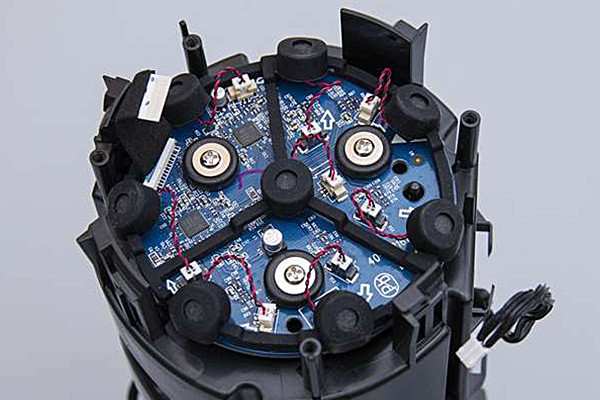
Understanding Smart Speaker Adhesives
Smart speaker adhesives are specially designed mounts or adhesives that allow users to affix their speakers securely to various surfaces. These adhesives come in diverse forms, including reusable gels, strong tapes, or magnetic mounts, catering to different preferences and surfaces.
Ideal Surfaces for Application
One of the primary advantages of smart speaker adhesives is their adaptability to various room environments. They adhere excellently to walls, cabinets, glass, and even tile, offering a versatile solution for positioning speakers in bedrooms, kitchens, bathrooms, and living areas.
Ensuring Proper Adhesion
Before applying the adhesive, it’s crucial to prepare the surface. Ensure it’s clean, dry, and free of dust or debris. These practices promote better adhesion, preventing any unexpected falls or instability. Additionally, follow the manufacturer’s instructions for the specific adhesive to guarantee optimal performance.
Tailoring Placement to Room Needs
Different rooms serve distinct purposes, requiring careful consideration when placing smart speakers. In kitchens, for instance, adhering speakers to cabinet doors or walls frees up counter space while providing optimal sound coverage. Bedrooms might benefit from wall-mounted speakers for bedtime music or voice commands.
Maximizing Acoustic Performance
For maximizing their acoustic performance, strategically positioning smart speakers is vital. While adhesives offer flexibility in placement, avoiding surfaces that might hinder sound quality, such as excessively porous walls or areas prone to vibrations, is essential.
Reusability and Removal
Most smart speaker adhesives are reusable, allowing for adjustments or repositioning without leaving residue or damaging surfaces. Prioritize adhesives that offer this flexibility, facilitating changes in room layouts or preferences without compromising aesthetics.
Safety Considerations
Always prioritize safety when using smart speaker adhesives. Ensure the adhesive’s weight capacity aligns with your speaker’s weight to prevent accidents. Additionally, be mindful of sensitive surfaces or wallpapers that might be affected upon removal.
User Experiences: What Feedback and Reviews Say About Smart Speaker Adhesives?
Smart speakers have become ubiquitous in modern households, offering convenience and connectivity. But what about their installation? Smart Speaker Adhesives have emerged as a solution for mounting these devices, promising ease and flexibility. Examining user feedback and reviews provides insight into the effectiveness and practicality of these adhesives.
Convenience in Installation
- Ease of Use:Users laud smart speaker adhesives for their simplicity. The straightforward application process makes mounting effortless, requiring no specialized tools or expertise.
- Versatility:These adhesives cater to various surfaces, including walls, glass, and tile, offering flexibility in placement without causing damage.
Durability and Stability
- Adhesive Strength:Reviews highlight the adhesive’s robustness, ensuring stability once the speaker is mounted. Users report minimal instances of devices detaching or falling over time.
- Residue-Free Removal:A key factor is the adhesive’s ability to be removed without leaving marks or residue, preserving the surface integrity.
Compatibility and Design
- Device Compatibility:Users appreciate adhesives that accommodate different smart speaker models, ensuring a snug fit and reliable hold.
- Aesthetics:Some feedback touches on the adhesive’s appearance, praising options that blend seamlessly with the speaker or surrounding decor, enhancing the overall look.
User Concerns and Improvements
- Temperature Resistance:A common point of feedback revolves around the adhesive’s performance in varying temperatures. Some users report reduced effectiveness in extreme heat or cold.
- Long-Term Adhesion:While most users find the adhesives reliable, a few mention occasional issues with long-term adherence, prompting suggestions for improvements in durability.
Overall Satisfaction
Feedback and reviews present a mixed but generally positive outlook on smart speaker adhesives. Users appreciate these products’ convenience, durability, and versatility, making them a preferred choice for mounting smart speakers in diverse settings.
What Adhesive Compatibility Is Needed for Different Smart Speaker Models?
Smart speaker adhesive compatibility ensures seamless integration without compromising the device’s surroundings. Different smart speaker models demand distinct adhesive features for optimal performance and stability.
Factors Impacting Adhesive Compatibility
- Surface Material:Smart speakers come with varied exteriors, ranging from plastic to metal or fabric. Each material demands a specific adhesive type for robust bonding without causing damage.
- Environmental Conditions:Adhesive compatibility must consider the environment where the smart speaker will be placed. Factors like temperature variations, humidity levels, and exposure to moisture influence the adhesive’s effectiveness.
- Weight Bearing Capacity:Smart speakers differ in weight, and the adhesive selected should align with the speaker’s heft. Ensuring the adhesive’s load-bearing capacity matches or exceeds the speaker’s weight prevents unforeseen detachment.
Adhesive Types for Different Smart Speaker Models
- Plastic-bodied Speakers:Adhesives compatible with plastic surfaces must exhibit strong bonding properties while non-corrosive. Silicone-based adhesives or acrylic-based tapes are often suitable for plastic exteriors, offering durability and resistance to environmental changes.
- Metal-bodied Speakers:Metal surfaces necessitate adhesives that are resistant to oxidation and capable of forming a robust bond. Epoxy adhesives or specialized metal-to-metal bonding tapes effectively secure smart speakers with metallic casings.
- Fabric-covered Speakers:Fabric exteriors require adhesives that provide a secure grip without seeping through the fabric or causing discoloration. Pressure-sensitive adhesives or solvent-based options designed for textiles are ideal for ensuring a stable attachment without compromising the speaker’s appearance.
Choosing the Right Adhesive
- Consult Manufacturer Recommendations:Manufacturers often provide guidelines or recommended adhesives suitable for their smart speaker models. Adhering to these suggestions ensures compatibility and minimizes the risk of damage.
- Adhesive Testing: Conducting small-scale adhesive tests on inconspicuous areas helps assess compatibility. These practices promote better adhesion, preventing any unexpected falls or instability.
- Consider Longevity and Removal Ease:Selecting an adhesive that balances strong bonding and ease of removal is crucial. A removable adhesive that leaves minimal residue upon detachment ensures flexibility for repositioning or replacing the smart speaker.
What Are the Future Trends in Smart Speaker Adhesives?
Smart speakers have revolutionized how we interact with technology in our daily lives. Behind the sleek designs and advanced functionalities lie crucial components, such as adhesives, that are pivotal in their durability and performance. As technology evolves, the future of smart speaker adhesives presents intriguing trends and advancements that promise enhanced user experiences and product innovation.
Adaptable Materials for Varied Surfaces
- Multi Surface Adhesion:Future adhesives are being engineered to adhere to diverse surfaces, from glass to metal and fabric, ensuring compatibility with evolving smart speaker designs.
- Enhanced Durability:Having adhesives resistant to temperature changes and humidity fluctuations will be crucial in prolonging the lifespan of smart speakers, especially in challenging environments.
Miniaturization and Improved Performance
- Nano Adhesives:Advancements in nanotechnology enable the development of ultra-thin adhesives, allowing for compact designs without compromising performance.
- Optimized Acoustics:Specialized adhesives designed to minimize vibrations and enhance sound quality are anticipated, contributing to an immersive audio experience.
Sustainability and Eco-Friendly Solutions
- Biodegradable Formulations:Manufacturers are shifting toward eco-friendly adhesives made from renewable sources, aligning with the growing demand for sustainable tech products.
- Recyclable Materials:Smart speaker adhesives that facilitate easy disassembly and material recycling support a circular economy, reducing environmental impact.
Smart Integration and Functional Enhancements
- Conductive Adhesives:Innovations in conductive adhesives enable seamless integration of components, allowing for new functionalities within smart speakers.
- Sensor-Embedded Adhesives:Integration of sensors within adhesives might enable smart speakers to detect environmental changes or user preferences, enhancing their adaptability.
User-Centric Customization
- Personalized Adhesive Solutions:Future trends may involve customizable adhesives, allowing users to tailor the grip strength or adhesive properties based on specific usage scenarios.
- User-Friendly Application:Manufacturers may focus on user-friendly adhesive application methods, enabling consumers to repair or modify quickly and easily.
Comparing Adhesives for Different Smart Speaker Brands What’s the Difference?
Smart speakers have become integral to modern households, offering convenience and connectivity. Yet, behind their seamless integration into our lives lies a crucial component: adhesive. Often overlooked, the adhesive used in these devices plays a pivotal role in their stability and durability. Here’s a comparative exploration of adhesives across various smart speaker brands and the differences they bring.
Adhesive Composition
- Amazon Echo:Amazon’s Echo series commonly utilizes industrial-grade adhesives. These adhesives are designed for robust bonding, ensuring the speaker remains steadfast in diverse environmental conditions.
- Google Nest:Google Nest speakers leverage specialized adhesives that prioritize versatility. These adhesives balance strong bonding and easy removal, facilitating repairs or replacements.
- Apple HomePod:Apple’s HomePod employs adhesives known for their precision application. These adhesives are meticulously engineered to provide a secure fit while allowing for intricate assembly processes.
Bonding Strength
- Amazon Echo:With an emphasis on stability, Echo speakers employ adhesives that boast exceptional bonding strength. It ensures the device stays firmly in place even amidst vibrations or movement.
- Google Nest:Google Nest’s choice of adhesive focuses on a strong bond while allowing for repositioning. This feature aids in troubleshooting and repair without compromising the overall integrity of the speaker.
- Apple HomePod:The adhesive used in HomePod devices is calibrated for a secure, unyielding attachment. Its strength is vital to sustain the device’s weight and sleek design.
Environmental Resilience
- Amazon Echo:Engineered for durability, the adhesives in Echo speakers exhibit resilience against temperature variations, humidity, and other environmental factors, ensuring consistent performance over time.
- Google Nest:Versatility is a hallmark of Nest’s adhesive choices. They are formulated to withstand moderate environmental challenges while allowing for reusability during repairs or upgrades.
- Apple HomePod:The adhesive employed in HomePods is crafted to endure various environmental conditions, maintaining its bonding integrity and structural support.
Are There Eco-Friendly Adhesive Options for Smart Speakers?
In the ever-evolving world of technology, smart speakers have become integral to modern homes. However, as consumers become more conscious of their environmental footprint, the materials used in these devices, including the adhesives, are under scrutiny. Let’s explore whether there are eco-friendly adhesive options for smart speakers.
The Challenge with Conventional Adhesives
- Environmental Impact:Traditional adhesives used in smart speakers often contain chemicals and non-biodegradable materials, contributing to environmental pollution.
- Health Concerns:Adhesives releasing volatile organic compounds (VOCs) can harm human health and the environment.
- Disposal Issues:Improper disposal of devices with non-eco-friendly adhesives can further exacerbate environmental problems.
Advancements Towards Eco-Friendly Solutions
- Bio-Based Adhesives:Researchers are exploring bio-based adhesives derived from natural sources like plants, starches, or proteins. These adhesives tend to have a lower environmental impact and biodegrade more readily.
- Water-Based Adhesives:Water-based adhesives are gaining traction for their eco-friendly properties. They contain fewer harmful chemicals and emit lower levels of VOCs compared to solvent-based alternatives.
- Recyclable Adhesive Materials:Manufacturers are experimenting with materials that are not only adhesive but also recyclable, facilitating easier disassembly and material recovery.
Benefits of Eco-Friendly Adhesives
- Reduced Environmental Impact:Eco-friendly adhesives contribute to lower carbon footprints and decreased pollution during production and disposal phases.
- Healthier Indoor Environment:With fewer VOC emissions, smart speakers utilizing eco-friendly adhesives can contribute to better indoor air quality.
- Alignment with Sustainability Goals:Using eco-friendly adhesives aligns with a company’s or consumer’s commitment to sustainability and responsible consumption.
Challenges and Considerations
- Cost and Availability:Eco-friendly adhesives might be more expensive to produce initially, potentially impacting the final product’s price. Additionally, their availability might be limited compared to conventional options.
- Performance and Durability:Ensuring eco-friendly adhesives meet the same performance standards and durability levels as their traditional counterparts is crucial for widespread adoption.
- Industry Adoption and Standards:The shift towards eco-friendly adhesives requires industry-wide collaboration to set standards and encourage widespread adoption.
Conclusion
In conclusion, the world of Smart Speaker Adhesive is vast and impactful, shaping how we experience sound and technology. From its humble beginnings to prospects, this exploration has shed light on the intricate details that often go unnoticed. As we continue to witness advancements in adhesive technology, one thing remains clear: Smart Speaker Adhesive is a silent force that resonates in every beat and melody, connecting us to the heart of innovation.
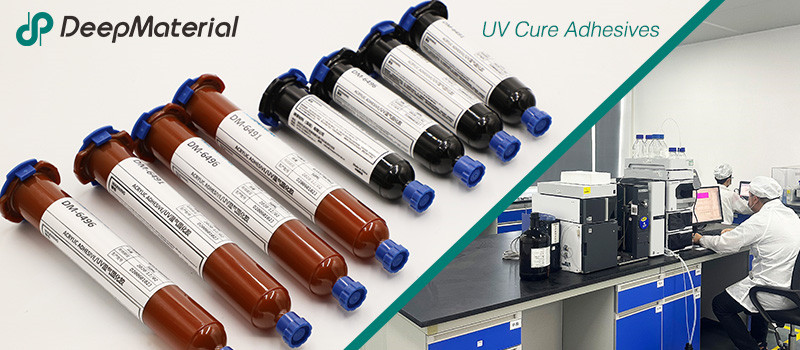
DeepMaterial
Based on the core technology of adhesives, DeepMaterial has developed adhesives for chip packaging and testing, circuit board level adhesives, and adhesives for electronic products. Based on adhesives, it has developed protective films, semiconductor fillers, and packaging materials for semiconductor wafer processing and chip packaging and testing. More…
UV Curing Adhesives
UV light cure have a number of benefits making them a popular choice among many product assembly and manufacturing applications. Many UV light cure adhesives can provide a nearly instantaneous bond to difficult substrates like glass and plastic. UV cure adhesives often require an accelerator or UV light for a bond to form.
Adhesive Blogs & News
The latest adhesive industry science and technology, Deepmaterial news, and market trends and forecasts.
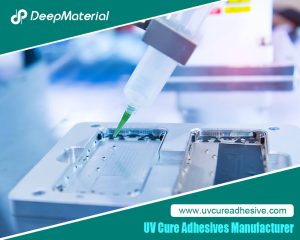
The Quantitative Influence of Crosslinking Density on the Flexibility and Hardness of Adhesives and the Formulation Optimization Strategy
The Quantitative Influence of Crosslinking Density on the Flexibility and Hardness of Adhesives and the Formulation Optimization Strategy This article systematically expounds the quantitative relationship between the crosslinking density and the flexibility and hardness of adhesives. Combining the theories of polymer physics with experimental analysis methods, it reveals the mechanism of the action of the
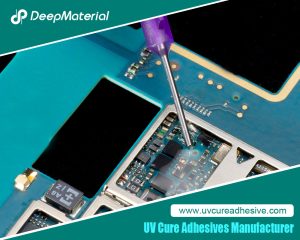
Technical Strategies for Balancing the Rapid Curing Property and Long Operating Time of UV Adhesives
Technical Strategies for Balancing the Rapid Curing Property and Long Operating Time of UV Adhesives UV adhesives have been widely used in many fields such as electronics, optics, and medicine due to their advantages of rapid curing, high bonding strength, and environmental protection. However, their rapid curing property also brings challenges in some application scenarios.
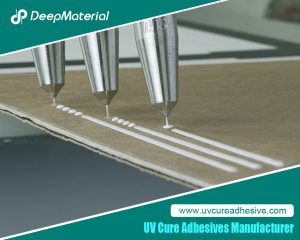
Biocompatibility of LED UV Glue Adhesive and Its Application Potential in Medical and Food Packaging Fields
Biocompatibility of LED UV Glue Adhesive and Its Application Potential in Medical and Food Packaging Fields LED UV glue adhesive has been widely applied in numerous fields due to its advantages such as rapid curing and easy operation. However, in fields with stringent safety requirements like medical and food packaging, its biocompatibility after curing
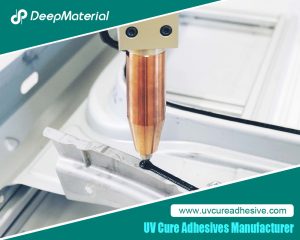
Exploring the Environmental Performance of UV Glue and Strategies for Optimizing Odor and VOC Content
Exploring the Environmental Performance of UV Glue and Strategies for Optimizing Odor and VOC Content UV glue, as an adhesive that achieves rapid curing through ultraviolet (UV) light irradiation, has been widely applied in numerous fields such as electronics, optics, healthcare, and automobiles, thanks to its advantages of fast curing speed, high bonding strength, and
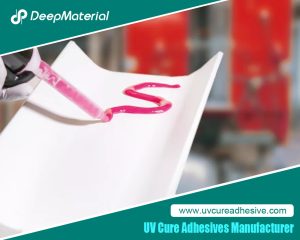
Compatibility Analysis and Countermeasures of LED UV Glue with Automated Production Equipment
Compatibility Analysis and Countermeasures of LED UV Glue with Automated Production Equipment LED UV glue has been widely used in modern manufacturing due to its advantages such as fast curing speed, high bonding strength, and environmental friendliness. However, in the automated production process, if there are problems with the adaptability between the glue and equipment
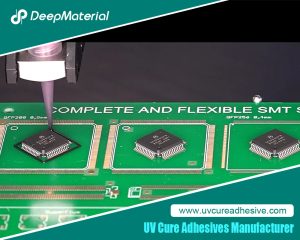
Influence of Viscosity and Thixotropy of Glue on the Quality of Glue Dots in the Dispensing Process and Solutions
Influence of Viscosity and Thixotropy of Glue on the Quality of Glue Dots in the Dispensing Process and Solutions The dispensing process is an important part of the application of LED UV glue adhesive, and the quality of this process directly affects the final performance of the product. The physical properties of the glue,











